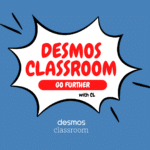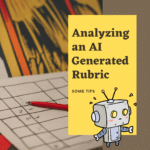
My husband teaches high school English. I made a reference to ThingLink. He says “What is ThingLink?” I said… “this is your lesson plan on Monday. Ask your students to create a ThinkLink about the book Jane Eyre… BUT… You are not allowed to look up what it is.”
The students created some wonderful and creative ThinkLinks.
When we know how to do something, we can feel that we should show this to students. This has the potential of limiting student ideas and creativity as they think that is the way to do it. There could be other ways. We tend to want to put constraints, provide a rubric, give directions… these limits can sometimes curtail student creativity.
If you do not know how to do it, the students have to work with each other, look it up, and figure it out. Isn’t this often what you have to do in your everyday life? We likely were not given enough PD on different programs or tools and no matter what we have to figure out how to use it. Being able to push buttons, see how things work, experiment, fail, try again, look things up, seek out suggestions from others, receive feedback from peers are important life skills.
The person doing the work, is the person doing the learning.
If we want students to be critical thinkers that means we have to stop thinking for the students. Providing step by step directions robs students of the opportunity for discovery. I’ve spent many hours preparing tutorials for students and other times I’ve simply told them to check something out. Why am I spending hours on tutorials when I can instead spend time giving students high-quality feedback that improves their learning. Let students try a ThingLink, do not look it up. When they turn it in, have their peers provide feedback for suggestions on how to improve it. Include your own suggestions for ways the student can improve on “clearly communicating their ideas.” Not grading 30 of the same thing is a beautiful thing.






